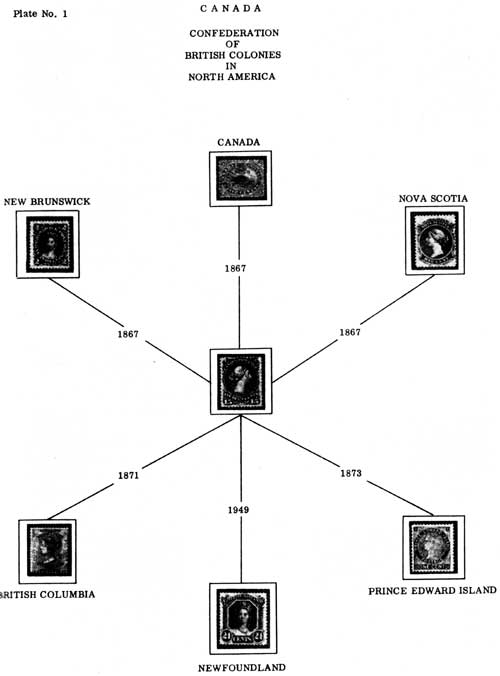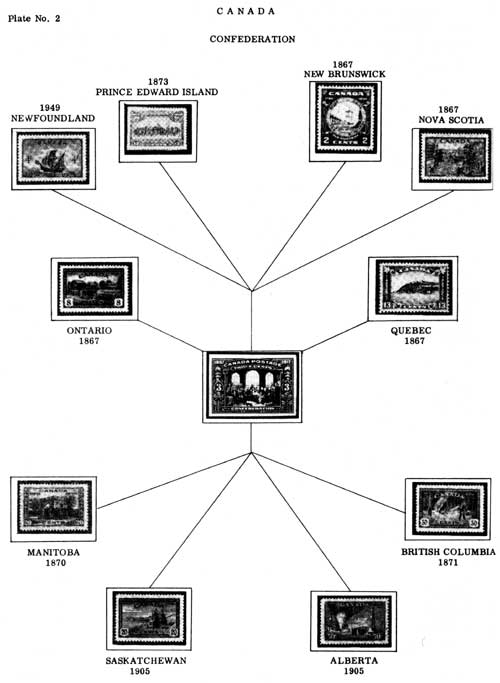by Douglas Kemp
Manitoba Pageant, September 1956
|
In this article I would like to talk briefly to those of our readers who are active stamp collectors or would-be collectors, and yes, to those who have been collectors and who, for some reason, have given up the hobby. I hope that what I have to say will result in new interests for some and revived interests for others.
Teaching history is my job and stamp collecting is one of my hobbies. Because of my great interest in history I look for the history stories that my stamps can tell and I give them the chance to tell that story. I do not have the time nor the money to become what is usually known as the serious or advanced collector, that is, the collector whose goal is completeness in issues and varieties and soon, and so I collect stamps in a way which holds my interest and which is within my means. That, to me, seems like a reasonable goal for any collector.
As part of my approach to the hobby I mount my stamps to suit my purposes and not to satisfy the demands of issues, time order and such things. If you will look at the accompanying illustrations you will see what I mean. My purpose in the two page layouts was to let Canadian stamps tell part of the Canadian confederation story and I chose these pages for this article because the stamps used can be obtained even by the beginner.
The layout in Plate No. 1 makes use of stamps of the former British Colonies in North America which in 1867 or later came together as part of the Dominion of Canada. At the top are stamps of the three original members of the union and at the bottom are stamps of the other three colonies which were to join the union later. The stamp in the centre is one of the so-called large pence issue; the first issue by the Dominion of Canada. The dates are those indicating when each of the colonies joined the union.
Have you thought of letting your stamps tell their stories? You will find them interesting. The Confederation story is only one of the many that my stamps tell.

The layout of Plate No. 2 completes, as it were, the story which began on the other layout. Stamps associated with the story of each of Canada's ten provinces have been used and again the dates shown are those indicating when each province became a part of the Dominion. The stamp in the centre is the 1917 confederation commemorative.

These layouts for pages in my album represent only a portion of the confederation story I have asked my stamps to tell. Other pages contain the 1927 confederation commemoratives and historicals, views of the Canadian parliament buildings and of Ottawa, Fathers of Confederation (Macdonald, McGee and Cartier) with biographical sketches, and so on.
Page revised: 30 June 2009